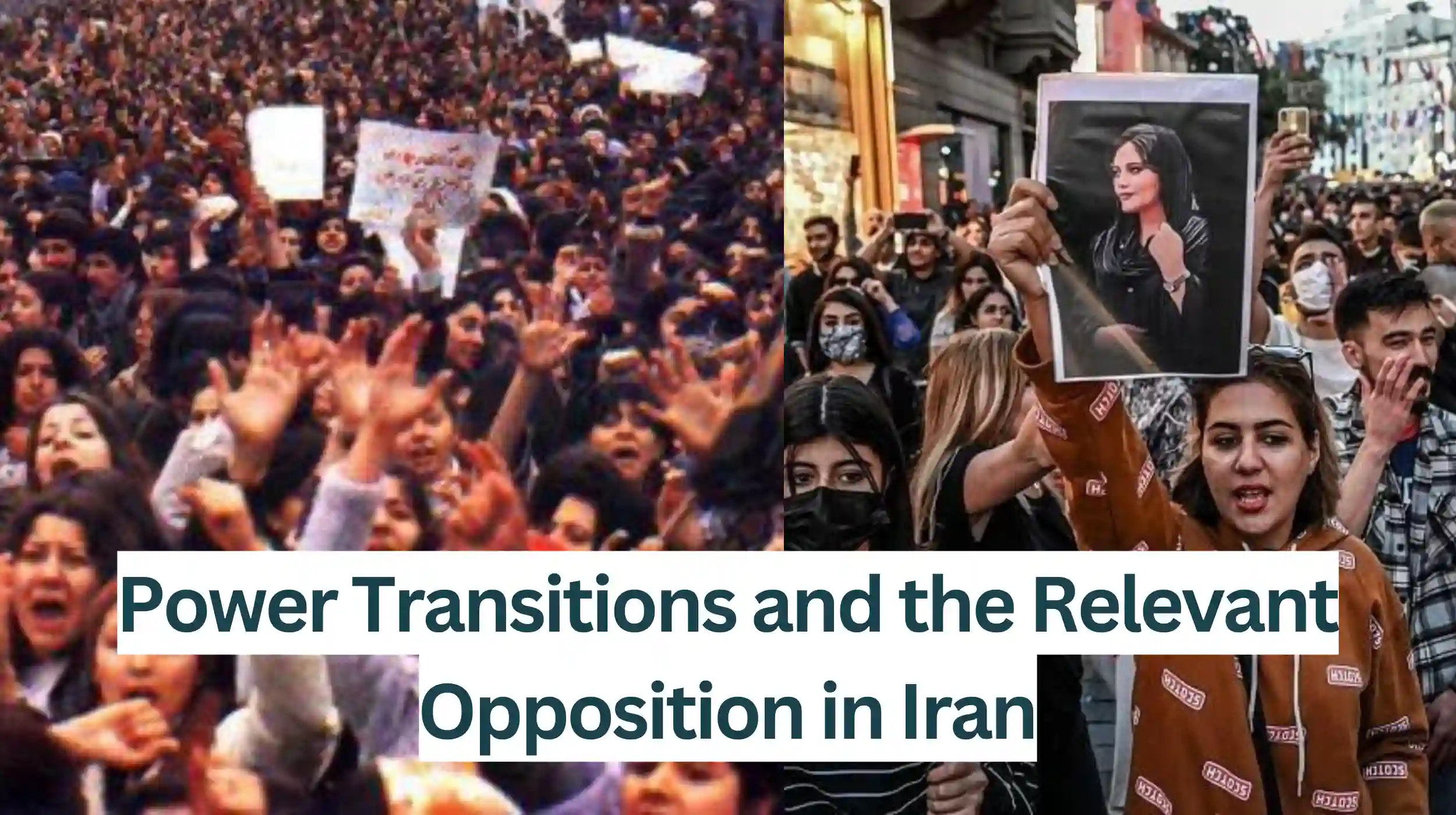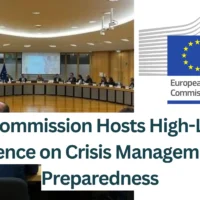Spain (Brussels Morning) – In the wake of the helicopter accident resulting in the death of the Iranian President and eight more dignitaries, there has been a focus on the path to his succession. This article looks instead at the opposition that is likely to have a bearing on the status quo and the political evolution of Iran in the medium to long run. The analysis reviews the outlook of the prevailing conservative factions, which we may consider “right-wing” in traditional political discourse. Initially, we look at their institutional hold to power as well as their socioeconomic appeal and mobilization potential. Thereafter, we look at the systemic vacuum and how this is filled by a “relevant opposition.”
Clearly, political relevance in Iran does not refer solely to the constrained limits of a vetted, limited, and controlled framework of representative politics. Political movements and political parties are distinct elements; particularly where political parties lack symmetry and similarity with standard political norms in landscape.
Opposition is often extra-systemic, with a bearing on political power that is often indirect, via the mobilization of people, capital, and indeed protest movements. Such oppositional groups have diverse demographic and ideological profile, moving through the revolving doors of systemic and extra-systemic influence. Relevance then is the operative word, as this refers to the ability to influence decision making. The dominant power structure within the Islamic Republic, comprising the Supreme Leader, radical political clerics primarily based in Qom and Mashhad, and the Revolutionary Guards conglomerate, has endeavored to consolidate their influence by marginalizing perceived “non-insiders” and purifying the political sphere. This strategic maneuver aims to ensure their continued dominance and maintain a tight grip on power.
Given the entrenched nature of the political system, governance approach, and mindset of the Islamic Republic’s leadership, it is unlikely that the president’s death will usher in significant changes or lead to the ascension of a radically different successor. However, if the regime opts for limited political openings, these will be tightly controlled and managed from above. In such a far-fetched but unlikely scenario, prominent right-wing figures who have since adopted a more moderate and pragmatic stance, such as the former Speaker of the parliament Ali Larijani, may emerge as viable candidates for consideration within the current political landscape.
Shades of conservatism
Political competition is far move constrained during the last five years. Following the passing of late President Raisi, the contest is more about ‘who’ rather than ‘what’ the next Iranian government will represent. The coalition of conservative factions that make up the ‘Endurance Front,’ which by forming a cohesive support network, significantly bolstered the former President in his political standing, is not looking for a new champion. Within its ranks, one can count figures such as Ali Bahgeri-Kani, the deputy minister of foreign affairs and responsible for the failed nuclear negotiations of the incumbent administration. Other prominent figures include the Minister of Roads and Urban Development, Mehrdad Bazrpash, and Vice President Amir Hossein Ghazizadeh. The two individuals in question, devoid of any notable accomplishments, yet reliant on propaganda, have also thrown their hats into the ring for the upcoming elections.
The Endurance Front wields considerable material resources, with a vast network of tributary supporters within the state, who pay protection dues in a vast clientelist system where the distribution of public office is a major political resource.
To get hold of power, this front will need to carry with it more ultra-militant elements of zealots who came to the forefront during the March 2024 elections, including Mahmoud Nabavian, Hamid Rasaei, and Morteza Agha-Tehrani. This purist faction of “Loyal contrarianism” appears to double down on the theological foundation of Iran’s constitutional foundation, apparently opposing government, but in fact lending the ruling majority an aura of ‘mainstream realism.’ Often, they wave the flag of a purist, anti-status quo, purist and incorruptible flag. Their champion is the former Secretary of the Supreme National Security Council and chief nuclear negotiator from 2007-2013, Saeed Jalili. In the current context, a prominent figure, who was among the first to register for the upcoming presidential election, has now emerged as the de facto candidate supported by extremist factions within the conservative political bloc, or at the very least, a key power broker in the race.
The adversaries to this alliance of neo-fundamentalist and status quo conservative elements have been retreating. The former mayor of Tehran, Mohammad-Baqer Qalibaf who currently serves as the Speaker of the Parliament, is affiliated with a relatively more pragmatic strand faction of the right-wing political spectrum. His faction has been discredited by a series of corruption allegations that have undermined his chances of emerging as a serious power contender. however, despite a decline in his electoral support base as evidenced by reduced vote share in the recent uneventful parliamentary elections, he has managed to retain his influential position due to the continued backing he enjoys from the supreme leader’s office, suggesting a potential realignment of power dynamics within the country’s complex right-wing political landscape. In a surprising turn of events, the current Speaker of Parliament, who is tasked with overseeing the upcoming early presidential elections following the former president’s passing, has registered his own candidacy on the final day of the registration period. This move, despite his previous electoral defeats, underscores the legal ambiguities and the relative inconsequentiality of the law within the Islamic Republic’s political framework.
Aside from these figures, one should add a long list of ‘freelance’ political entrepreneurs, who have entered the race to be counted and included in the inevitable redistribution of power that will follow. This includes the incumbent Mayor of Tehran, Alireza Zakani.
When the system does not work
One of the main mechanism for retaining political competition within a short far-right political spectrum is vetting. The main body that vets every electoral candidate is the Guardian Council, which remains completely controlled by Supreme Leader Ali Khamenei (the members chosen directly or indirectly by him) or Politically expedient cliques simulating devotion. The Council is dominated by the revolutionary factions of the Shiite clerical establishment and the powerful IRGC military-political conglomerate. The 2024 legislative elections in March witnessed a historical nadir in terms of participation. With a nationwide turnout of merely 40% in the first round, and a meager 7% participation rate during the second round in Tehran, it is apparent that the wider masses are increasingly disinterested in an overall predictable political game.
The problem with this kind of systemic predictability is that it bolsters anti-systemic forces. The 2022 “women-life-freedom” protest movement marked an unprecedented level of resistance, carrying unwavering solidarity, garnering broader social appeal. For wider segments of society, the 2022 events were testing the resilience of the system on the street. The Iranian elite are not always able to rise to the challenge and understand the nature of the opposition presented. In fact, Iran’s ruling class appears out of touch with popular discontent. Speaking on condition of anonymity, a former of the IRGC (Islamic Revolutionary Guard Corps) member, admits the regime’s reflexive defensiveness and reluctance to candidly confront systemic failures. Similarly, a member of the Supreme Council of the Cultural Revolution – an institution dominated by the Leader’s appointees – questions whether Iran requires “collective wisdom” or majoritarian politics to address apparent socioeconomic challenges.
The 2022 entrenched the reflexive conviction that all opposition is anti-systemic and at some level supported from abroad. The evolution of the Endurance Front from an extremist group to the status quo, with systemic opposition only to the right of the political spectrum indicates a weakness, as electoral politics can no longer assimilate the opposition, which is now by definition anti-systemic.
Regressive conservatism has marginalized any reformist tendency, whether that is of the theologically fundamentalist kind or the reformist or pluralistic kind.
In theory, the so called “Iran’s Reform Front” consists of 27 parties, who do not share a common programmatic agenda other than an opposition to the status quo. Their discourse revolves around “a back to the roots” narrative of support for the ideals underpinning the Islamic Revolution, an idealist narrative that no longer resonates.
The secretary general of the Reform Front, Azar Mansouri, limits herself to the role of a social media advisor to the government.
Secondary and tertiary-level figures of the reformist political faction still devoted the establishment, including Ishaq Jahangiri – the former First Vice President, AbdulNasser Hemati – the ex-Central Bank governor, and Masoud Pezeshkian – a reformist MP and former Health Minister, have also thrown their hats into the ring. However, their candidacies remain uncertain, as they await approval from the Guardian Council. Furthermore, their public standing is believed to be weakened by the electorate’s growing disillusionment with the reformist camp.
Prominent figures such as the once popular presidents Mohammad Khatami and Hassan Rouhani are increasingly irrelevant, failing the vetting process, and hesitant to escalate their confrontation by taking a public opposition stand.
Those who are vocal have ended up in prison or exile and the government’s ‘doxa’ is increasingly oppressive. An example is Mustafa Tajzadeh, a prominent figure from the ancient ¨Islamic Iran Participation Front¨ (banned in 2009) and a driving force behind the steadfast reform-minded activists who have breached the government’s ideological framework.
A large segment of Iranian citizens believe the status quo is untenable, focusing on dissidents, sociologist [such as Saeed Madani], political scientists, governance experts, and human rights activists resisting the establishment from within the country.
Iran’s left behind laying the ground for opposition
The system is particularly unrepresentative of younger demographics, particularly women. International media and foreign Persian-language services largely focus on leaders and political parties operating in exile. These entities are more visible but not necessarily influential. The son of the former Shah, Reza Pahlavi, is clearly not a major figure despite the disproportionate amount of coverage he receives. For urban classes facing the erosion of their purchasing power and the weakening of their unions, this kind of opposition is not particularly relevant. To the contrary, some of the steadfast leaders of the reformist movement previously engaging in electoral campaigning, such as the Mustafa Tajzadeh, remains relevant to those below 35, with significant potential for political mobilization. Shima, a 37-year-old private sector manager working in audits in Shiraz, posits that students, workers, and merchants have the potential to emerge as an opposition force to be reckoned with.
Another relevant and increasingly anti-systemic force in Iranian politics are national minority movements. According to the Stockholm-based political activist Golaleh Sharafkandi, native of Mahabad, the Kurds’ desire for national autonomy is the direct result of discrimination and limited civic rights. She notes that younger generations of Kurdish-Iranians are increasingly willing to take to the streets, although their mobilization is regional in scope has limited appeal in Tehran. . A young Kurdish-Iranian teacher from Divandareh echoes the view that Kurds demonstrate a strong sense of cultural cohesion, yet they tactically leverage this collective identity nationwide when they view other ethnic communities as prospective political allies and supporters. Although violent transnational networks strive to take advantage of the zeitgeist shaped by sociopolitical unrest and disaffection, when this national mobilization is framed as a pro-democracy, Tehran is quick to discredit its legitimacy by pointing to ‘traitors’ and fifth columnists. Given the debilitating effect of almost four decades of sanctions, this accusation may have some domestic resonance. However, in a climate of economic instability and ineffective governance, the IRGC fears that the question of nationalities may present a formidable threat, particularly when national oppression is intertwined with socioeconomic deprivation.
The success for alteration efforts hinges on mobilizing latent forces and building a robust democratic movement, but the ruling system works to impede such developments. In a climate of economic instability and ineffective governance, the IRGC [while encompassing diverse and at times conflicting segments within] emerges as a contentious political option, with some economically-affected groups seeing it as a desperate solution against uncertainty and decline. Meanwhile, the foreign-based opposition’s discourse of regime overthrow, though resonating with the deeply dissatisfied, has proven ineffective and weakened domestic civil and democratic forces
It is evident that one of the arduous tasks facing a unified opposition within Iran is to compel world powers to reassess their interests in alignment with the aspirations of the Iranian people. A comprehensive coalition comprising forces advocating fundamental changes and structural reforms, possessing experience in engaging with the international community, can effectively pursue this strategy.
Conclusions
The traditional function of elections in Iran supposed to absorb oppositional discourse, encourage mass mobilization, and invest the political system with a sense of popular legitimacy. This consolidating value of elections has been particularly important after 2021, when the vetting process of political representatives narrowed the scope for representation and degraded elections to a process of mass validation of the executive. As the margins of the political abstention from elections surges beyond 50% of the population, the scope for anti-systemic politics is rising.
The process of the supreme leader’s succession aftermath of his passing resurfaced again with the death of President Raisi as a key point of discussion. Undoubtedly, the incoming president holds critical standing at the relevant time within the power structure. It is imperative that he does not disrupt the potential succession plan.
The political contestants are few, ideologically vetted, and representing a single value system that acts cohesively, with little tolerance for dissent. The political system is no longer able to engage the population as a body politique, which would allow the government to claim popular sovereignty. People just stay at home, as was evidenced in the legislative elections of March 2024.
The central cleavage has now emerged between two key factions – those who are invested in maintaining the status quo- regime insiders, connected elites, and beneficiaries of the existing; and a diverse range of dissidents, intellectuals, and reformers seeking to move beyond the surface-level political dynamics and scrutinize the regime’s fundamental character, with an eye towards more transformative, system-wide changes.
Dear reader,
Opinions expressed in the op-ed section are solely those of the individual author and do not represent the official stance of our newspaper. We believe in providing a platform for a wide range of voices and perspectives, even those that may challenge or differ from our own. We remain committed to providing our readers with high-quality, fair, and balanced journalism. Thank you for your continued support.



